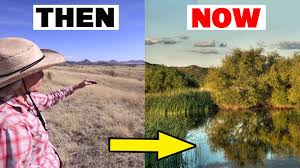
Breaking News
 Jimmy Dore Compares Trump's Endorsement of Overthrowing Libya to His Actions in Venezuela
Jimmy Dore Compares Trump's Endorsement of Overthrowing Libya to His Actions in Venezuela
 Pfizer mRNA Found in Over 88% of Human Placentas, Sperm, and Blood -- and in 50% of Unvaccinated...
Pfizer mRNA Found in Over 88% of Human Placentas, Sperm, and Blood -- and in 50% of Unvaccinated...
 "All real footage, no CGI, no AI, no video speed-up." Looks fake to me – their robot…
"All real footage, no CGI, no AI, no video speed-up." Looks fake to me – their robot…
 This Immigrant Admitted Their Plan for White PeopIe in America And It's Far Worse Than Most Thou
This Immigrant Admitted Their Plan for White PeopIe in America And It's Far Worse Than Most Thou
Top Tech News
 Build a Greenhouse HEATER that Lasts 10-15 DAYS!
Build a Greenhouse HEATER that Lasts 10-15 DAYS!
 Look at the genius idea he came up with using this tank that nobody wanted
Look at the genius idea he came up with using this tank that nobody wanted
 Latest Comet 3I Atlas Anomolies Like the Impossible 600,000 Mile Long Sunward Tail
Latest Comet 3I Atlas Anomolies Like the Impossible 600,000 Mile Long Sunward Tail
 Tesla Just Opened Its Biggest Supercharger Station Ever--And It's Powered By Solar And Batteries
Tesla Just Opened Its Biggest Supercharger Station Ever--And It's Powered By Solar And Batteries
 Your body already knows how to regrow limbs. We just haven't figured out how to turn it on yet.
Your body already knows how to regrow limbs. We just haven't figured out how to turn it on yet.
 We've wiretapped the gut-brain hotline to decode signals driving disease
We've wiretapped the gut-brain hotline to decode signals driving disease
 3D-printable concrete alternative hardens in three days, not four weeks
3D-printable concrete alternative hardens in three days, not four weeks
 Could satellite-beaming planes and airships make SpaceX's Starlink obsolete?
Could satellite-beaming planes and airships make SpaceX's Starlink obsolete?
How This Woman Turned Arizona's Desert into a Farmland Oasis

This climate has meant the region has been a hub for agricultural growth for thousands of years despite the fact rainfall has always been relatively low. It's Arizona's rivers and aquifers that hold groundwater which have supported the state's now $23 billion agriculture industry. In terms of revenue generated, Arizona's top five agricultural products are cattle, calves, lettuce, dairy products, cotton, and hay. In total, farmland makes up about 35% of the state of Arizona. Farming in the desert has been a challenge for Arizona's modern farmers, who grow water-intensive crops like cotton, alfalfa and corn for cows. It's estimated that these farms use nearly three-quarters of the available water supply to irrigate their crops.
The Colorado River system, which supplies 36 percent of Arizona's total water use has experienced extensive drought conditions for the past 19 years. This has resulted in Lake Mead dropping to historically low reservoir levels. More than one-third of Arizona's water flows up the Colorado River to Lake Mead. This year an intensifying drought and declining reservoir levels across the Western United States has prompted the first-ever water supply cuts to Arizona farmers.
Extensive droughts and dwindling water supplies have wreaked havoc on the once prosperous farms that could endure the arid conditions. Arizona has also become one the fastest growing states in the last decade, as result there has been a demand for tree lined neighborhoods, golf courses and lawns, all of which require vast amounts of water. As we keep consuming the ancient groundwater, without it being replenished, water tables drop and rivers start to dry up.

 First totally synthetic human brain model has been realized
First totally synthetic human brain model has been realized Mach-23 potato gun to shoot satellites into space
Mach-23 potato gun to shoot satellites into space

